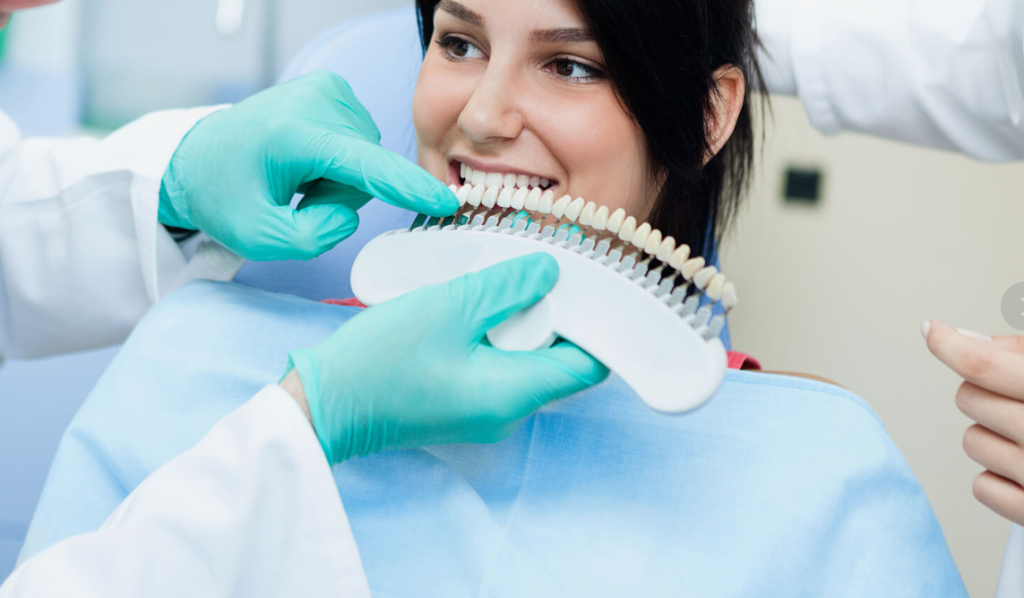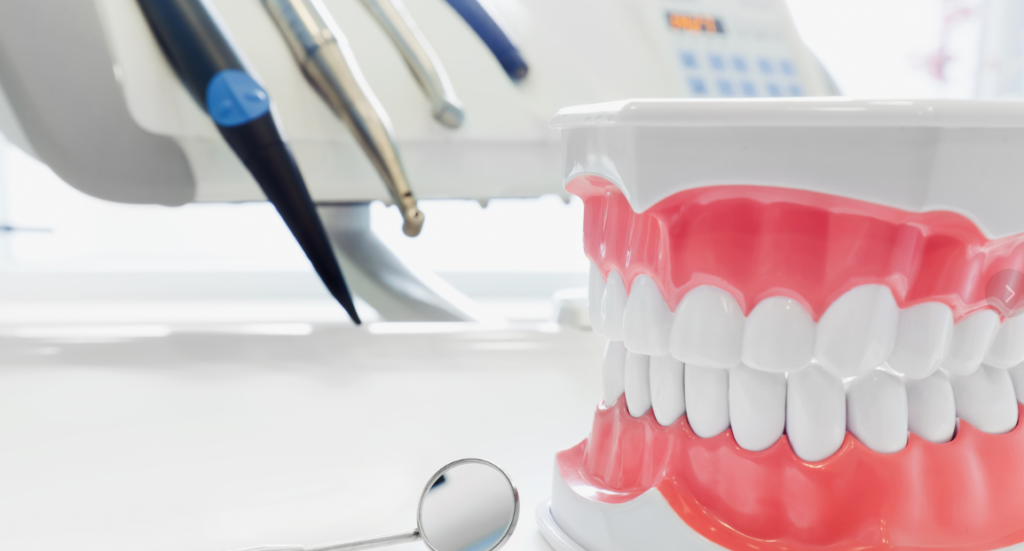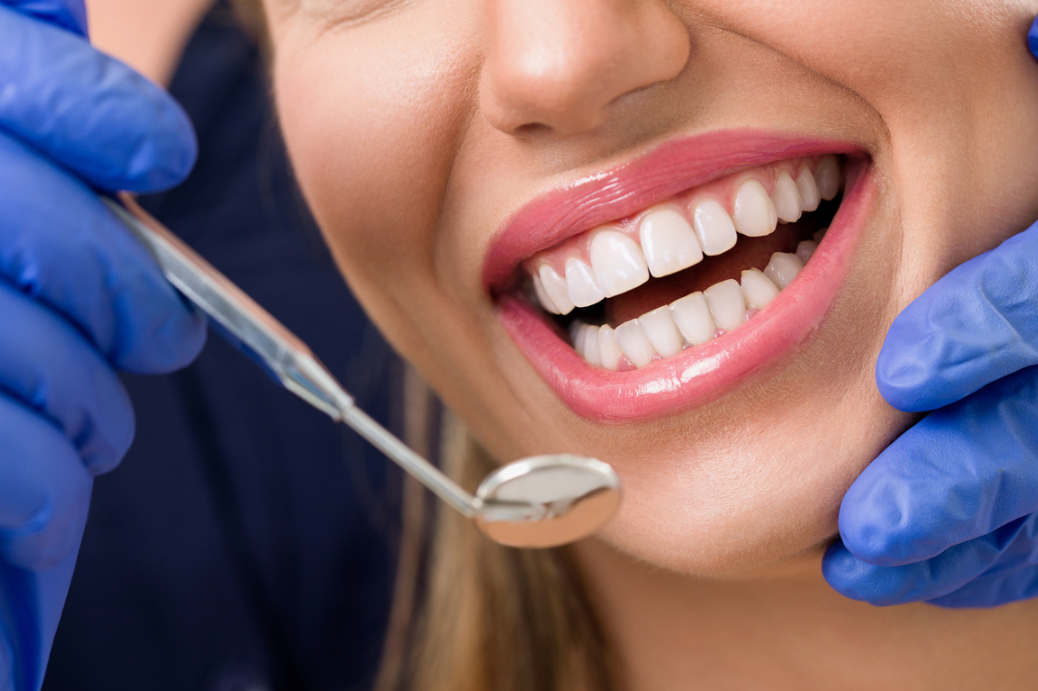The field of dental aesthetics has undergone a remarkable evolution in recent years, thanks to advancements in dental materials. These innovations have revolutionized the way dentists approach cosmetic dentistry, allowing for more natural-looking and durable results.
Aesthetic dentistry has witnessed a significant leap forward with the evolution of advanced materials, particularly in the realm of high-quality ceramics and composite resins. These innovative materials are designed to closely emulate the visual and functional characteristics of natural teeth, seamlessly integrating with the patient’s existing dentition. Not only do they exhibit remarkable durability, capable of withstanding the rigors of daily activities like chewing and speaking, but they also offer the assurance that patients can revel in their captivating smiles for years to come, free from concerns about the longevity of their aesthetic dental restorations.
Another notable advancement is the use of bioactive materials in dental treatments. These materials have the ability to stimulate the natural remineralization process of teeth, promoting the regeneration of damaged tooth structure. This not only enhances the aesthetics of the smile but also improves the overall oral health of the patient. Additionally, bioactive materials have antibacterial properties, reducing the risk of tooth decay and other oral diseases.
In addition to these material advancements, dental technology has also played a significant role in transforming the field of dental aesthetics. With the advent of 3D printing and digital imaging, dentists can now design and create dental restorations with unprecedented precision and accuracy. This allows for highly personalized treatment plans tailored to each patient’s unique needs and desired outcome. Furthermore, these technologies enable dentists to visualize the final result before starting treatment, ensuring a predictable and satisfactory outcome for both the dentist and the patient.
Overall, the advancements in dental materials have paved the way for a new era in dental aesthetics. With the use of high-quality ceramics, composite resins, and bioactive materials, dentists can now provide their patients with more natural-looking and durable restorations. Coupled with the technological advancements in dentistry, these innovations are transforming the way cosmetic dentistry is practiced, offering patients the opportunity to achieve their dream smiles with confidence and satisfaction.
Technological Advancements in Dentistry
Technological advancements in dentistry have revolutionized the field of dental aesthetics, providing dentists with innovative tools and techniques to enhance the design and creation of dental restorations. One of the most significant advancements is the introduction of 3D printing technology. With 3D printing, dentists can now produce highly accurate and customized dental restorations, such as crowns, bridges, and veneers, with exceptional precision and efficiency.
In addition to 3D printing, digital imaging has also played a crucial role in transforming the way dentists approach dental aesthetics. Digital imaging allows dentists to capture detailed images of a patient’s teeth and gums, enabling them to analyze and evaluate the oral condition more effectively. This technology not only aids in the diagnosis and treatment planning process but also allows dentists to create virtual mock-ups of the desired outcome, giving patients a preview of their potential smile makeover.
Furthermore, digital imaging has facilitated better communication between dentists and dental technicians, ensuring that the desired aesthetic results are achieved. Dentists can now share digital files and treatment plans with dental laboratories, streamlining the production process and minimizing errors. This integration of technology has resulted in improved aesthetics, as dental restorations can be precisely designed and customized to meet each patient’s unique needs and preferences.
In conclusion, technological advancements, such as 3D printing and digital imaging, have transformed the field of dental aesthetics by providing dentists with more precise and efficient methods for designing and creating dental restorations. These advancements have not only improved the aesthetic outcomes but also enhanced communication between dentists, dental technicians, and patients, leading to greater patient satisfaction. With the continuous evolution of technology, the future of dental aesthetics holds even more exciting possibilities for personalized and optimal smile design.
The Rise of Digital Smile Design

The rise of digital smile design has revolutionized the field of dental aesthetics, providing dentists with a powerful tool to visualize and plan aesthetic dental treatments with precision and accuracy. This innovative technology allows dentists to create a digital representation of a patient’s smile, allowing them to see the potential outcome of various treatment options before any procedures are performed.
With digital smile design, dentists can analyze the patient’s facial features, tooth alignment, and overall smile aesthetics to develop a customized treatment plan that will achieve the desired results. This technology enables dentists to make informed decisions about the most suitable treatment options, whether it involves teeth whitening, veneers, dental implants, or orthodontic procedures.
By utilizing digital smile design, dentists can effectively communicate with their patients, ensuring that they have a clear understanding of the proposed treatment plan and the expected outcome. Patients can actively participate in the design process, providing their input and preferences to achieve their desired smile makeover.
Furthermore, digital smile design facilitates collaboration between dentists and dental technicians, as the digital files can be easily shared and used to create highly accurate and customized dental restorations. This streamlines the treatment process, resulting in more efficient and predictable outcomes.
In summary, the emergence of digital smile design has transformed the field of dental aesthetics, allowing dentists to visualize and plan aesthetic dental treatments with precision and accuracy. This technology not only enhances communication and collaboration between dentists, dental technicians, and patients but also ensures that patients are satisfied with their desired smile makeover.
Improving Patient Satisfaction
Discover how the integration of digital smile design into dental practices is enhancing patient satisfaction by allowing them to preview and approve their desired smile makeover before treatment.
With the advancement of digital smile design technology, patients now have the opportunity to actively participate in the creation of their dream smiles. Gone are the days of uncertainty and guesswork when it comes to aesthetic dental treatments. Through the integration of digital smile design into dental practices, patients can now visualize and approve their desired smile makeover before any treatment begins.
Imagine being able to see a digital representation of your future smile, complete with perfectly aligned teeth, a bright and natural shade, and a harmonious overall appearance. This innovative technology allows patients to have a clear understanding of what their final result will look like, eliminating any doubts or concerns they may have had.
Not only does this enhance patient satisfaction, but it also establishes a sense of trust and confidence between the patient and the dental team. Patients can actively participate in the treatment planning process, providing input and making informed decisions about their desired outcomes. This collaborative approach ensures that the final result meets their expectations and aligns with their unique preferences.
Furthermore, the integration of digital smile design streamlines the communication between dentists, dental technicians, and patients. Through digital imaging and virtual simulations, all parties involved can have a clear understanding of the treatment plan, ensuring that everyone is on the same page. This effective communication leads to more efficient and predictable outcomes, reducing the need for multiple revisions or adjustments.
By incorporating digital smile design into dental practices, patient satisfaction is significantly improved. Patients can confidently embark on their smile makeover journey, knowing exactly what to expect and actively participating in the process. This technology empowers patients, giving them the opportunity to achieve their dream smiles and boosting their overall satisfaction with the results.
Streamlining the Treatment Process
With the advent of digital smile design, the treatment process in dental aesthetics has undergone a significant transformation. This innovative technology has revolutionized the way dentists, dental technicians, and patients communicate and collaborate, leading to more efficient and predictable outcomes.
One of the key advantages of digital smile design is its ability to facilitate effective communication between all parties involved in the treatment process. Dentists can now use advanced software to create virtual smile designs, allowing them to visualize and plan aesthetic dental treatments with precision and accuracy. This not only helps dentists in explaining the treatment options to their patients but also enables patients to actively participate in the decision-making process.
In addition, digital smile design streamlines the treatment process by enabling seamless collaboration between dentists and dental technicians. By sharing the virtual smile designs, dentists can provide detailed instructions to dental technicians, ensuring that the final restorations meet the desired aesthetic goals. This eliminates the need for multiple adjustments and saves valuable time for both the dental team and the patient.
Furthermore, patients benefit from the streamlined treatment process offered by digital smile design. They can preview and approve their desired smile makeover before the actual treatment begins, giving them confidence and peace of mind. This level of involvement and transparency enhances patient satisfaction and trust in the dental practice.
In conclusion, digital smile design has revolutionized the treatment process in dental aesthetics by promoting effective communication, collaboration, and patient involvement. By streamlining the process, it saves time, improves efficiency, and ensures more predictable outcomes. With the integration of this innovative technology, dental practices can deliver exceptional results and exceed patient expectations.
Minimally Invasive Techniques

Discover the growing trend of minimally invasive techniques in dental aesthetics, which are revolutionizing the field by preserving natural tooth structure while delivering stunning and long-lasting results. These innovative techniques prioritize the conservation of healthy tooth enamel and minimize the need for extensive dental interventions.
By utilizing advanced technologies and materials, dentists can now achieve remarkable aesthetic transformations with minimal disruption to the tooth’s natural structure. This approach not only enhances the appearance of the smile but also ensures the longevity of dental restorations.
Minimally invasive techniques encompass a range of procedures, including tooth-colored fillings, dental bonding, and porcelain veneers. These treatments offer a conservative yet effective solution for correcting imperfections, such as discoloration, chips, gaps, and misalignments.
Moreover, the use of minimally invasive techniques reduces the risk of post-treatment sensitivity and discomfort, allowing patients to enjoy a more comfortable and stress-free dental experience. With minimal downtime and faster recovery, individuals can quickly resume their daily activities with a renewed and confident smile.
The Future of Dental Aesthetics
The future of dental aesthetics is an exciting and promising one, as advancements in various areas are set to revolutionize the field. One of the key areas of development is regenerative dentistry, which focuses on restoring and regenerating damaged or lost dental tissues. Through innovative techniques and materials, dentists will be able to repair and regenerate teeth, leading to improved aesthetics and functionality.
Another exciting aspect of the future of dental aesthetics is the rise of personalized treatment plans. With advancements in technology and the availability of detailed patient data, dentists will be able to create customized treatment plans that cater to the unique needs and preferences of each individual. This personalized approach will ensure that patients receive the most effective and tailored dental treatments, resulting in enhanced aesthetics and patient satisfaction.
Furthermore, the integration of artificial intelligence (AI) is set to play a significant role in the future of dental aesthetics. AI-powered systems can analyze large amounts of data and assist dentists in designing optimal smile makeovers. By considering factors such as facial symmetry, tooth shape, and color, AI can provide valuable insights and recommendations for achieving the perfect smile. This integration of AI will not only improve the precision and accuracy of smile design but also enhance the overall patient experience.
In summary, the future of dental aesthetics holds great promise with advancements in regenerative dentistry, personalized treatment plans, and the integration of artificial intelligence. These developments will not only enhance the natural-looking and durable results of dental treatments but also provide patients with more tailored and satisfying experiences. As the field continues to evolve, patients can look forward to a future where dental aesthetics reach new heights of beauty and functionality.










